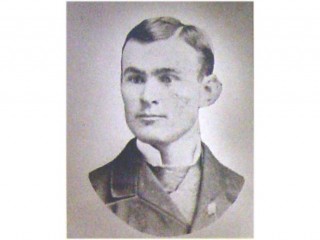
Robert Mills biography
Date of birth : 1781-08-12
Date of death : 1855-03-03
Birthplace : Charleston, South Carolina,U.S.
Nationality : American
Category : Arhitecture and Engineering
Last modified : 2012-01-24
Credited as : architect, designed the Washington Monument, neoclassical architecture
4 votes so far
In 1812, Mills designed the Monumental Church in Richmond, Virginia which was built to commemorate the death of 72 people in the Richmond Theatre. This incident sparked (no pun intended) his later interest in fireproofing measures.
Moving to Baltimore, he designed St. John's Episcopal Church, the Maryland House of Industry, and the Maryland Club. He is noted for designing the nation's first Washington Monument, in Baltimore, which began construction in 1815.
In 1820, he was appointed as acting commissioner of the Board of Public Works in South Carolina. In 1823, Mills was the superintendent of public buildings. In the next few years, he designed numerous buildings in South Carolina including court houses, the campus of the University of South Carolina, jails, and the Fireproof Building in Charleston. In 1825, he authored an Atlas of the State of South Carolina. One year later, he published Statistics of South Carolina. He reputedly designed the Old Horry County Courthouse, listed on the National Register of Historic Places in 1971.
In 1836 he won the competition for the design of the Washington Monument which is his best known work.
He also designed the Department of Treasury building and several other federal buildings in Washington, D. C. including the U.S. Patent Office Building, patterned after the Parthenon. See Patent Office 1877 fire. In South Carolina, he designed county courthouses in at least 18 counties, some of the public buildings in Columbia, and a few private homes. He also designed portions of the Landsford Canal, Chester County, on the Catawba River in South Carolina.
Mills was an early advocate of buildings designed to include fireproof materials. A fire in Kingstree, South Carolina destroyed much of the upper floor of a courthouse called the Fireproof Building which had been designed by Mills, but the county records on the first floor were protected due to his fireproofing measures. A fire also destroyed much of the Lancaster County, South Carolina Courthouse in August 2008.
He died in Washington, D.C. in 1855 and was buried at the Congressional Cemetery.
The broadest context for Mills' architecture was neoclassical architecture. This was the dominant style of building that was winning architectural design competitions and major projects of the time, both in Europe and in America. Under the umbrella of neoclassicism, his designs were partly Palladian, Georgian and often Greek Revival.
Apart from stylistic movements in architecture going on in the world at his time, Robert Mills was involved in the more local context of building in the Mid-Atlantic States. There, and especially in Washington D.C., were many figures contributing architecture of high quality. To build as Mills did on what is now the National Mall, he had to contend with the planning strictures of Pierre Charles L'Enfant, as well as Andrew and Joseph Ellicott. Being an architect of the now Baltimore-Washington Metropolitan Area he was also undoubtedly influenced by Thomas Jefferson and Jeffersonian architecture. Mills, with Jefferson and others, was able to create a distinctive federal style of architecture.
















